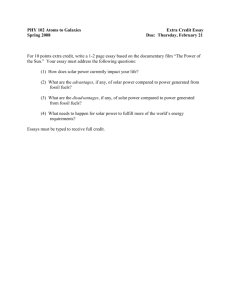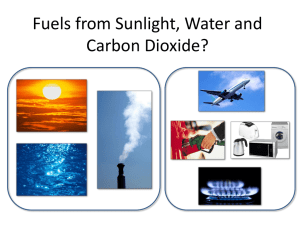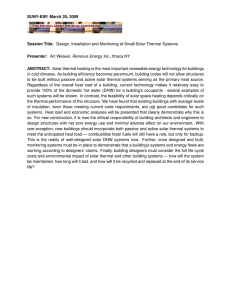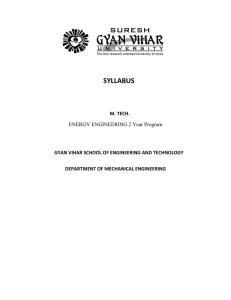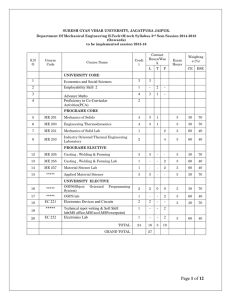Document 13551628
advertisement
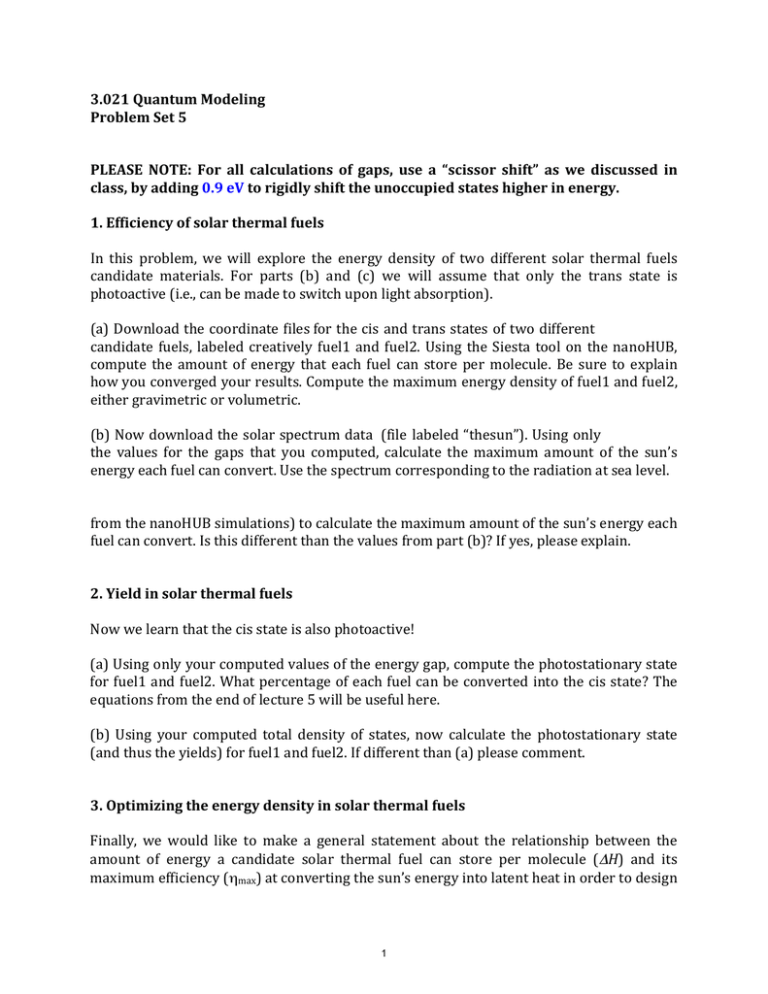
3.021 Quantum Modeling Problem Set 5 PLEASE NOTE: For all calculations of gaps, use a “scissor shift” as we discussed in class, by adding 0.9 eV to rigidly shift the unoccupied states higher in energy. 1. Efficiency of solar thermal fuels In this problem, we will explore the energy density of two different solar thermal fuels candidate materials. For parts (b) and (c) we will assume that only the trans state is photoactive (i.e., can be made to switch upon light absorption). 78!) !& !!$ & %!$&% &$ %%&&%!&)!$ &
& '%- $&(+ '= '>/ % & %& &!! ! & !-
!"'& & !' & ! $+ && ' %&!$ "$ !'/ %'$ &! *" !)+!'! ($+!'$$%'&%/!"'& &*' $+ %&+ !'= '>-
&$$(&$!$(!'&$/
78!)!) ! &%!$ %"&$' &7 4&%' 58/ % ! +
& ('% !$ & "% && +!' !"'&- '& & *' !' & ! & %' 3%
$+' ! ($&/%&%"&$'!$$%"! &!&$&! &%(/
from the nanoHUB simulations) to calculate the maximum amount of the sun’s energy each fuel can convert. Is this different than the values from part (b)? If yes, please explain. 2. Yield in solar thermal fuels Now we learn that the cis state is also photoactive! (a) Using only your computed values of the energy gap, compute the photostationary state for fuel1 and fuel2. What percentage of each fuel can be converted into the cis state? The equations from the end of lecture 5 will be useful here. (b) Using your computed total density of states, now calculate the photostationary state (and thus the yields) for fuel1 and fuel2. If different than (a) please comment. 3. Optimizing the energy density in solar thermal fuels Finally, we would like to make a general statement about the relationship between the amount of energy a candidate solar thermal fuel can store per molecule (ΔH) and its maximum efficiency (ηmax) at converting the sun’s energy into latent heat in order to design 1
a fuel with the largest possible energy density. The maximum efficiency is obtained when the longest wavelength of light that induces transcis photoisomerization (λmax) is equal to the HOMO-­‐LUMO gap of the molecule (Egap). For any candidate, Egap must be equal to or larger than ΔH, so we can say that we obtain ηmax when hc/λmax = ΔH. (a) Explain why hc/λmax must be larger than ΔH. 78 % & %!$ %"&$' & "!& & *' + ! %!$
&$ '!$<B ΔB?/ 9 &.% & %"$%& &! !& '$ ('% !$
*& $ &%!-//-</>/:%%'&&! +&&$ %%&&%"!&!&(/ (c) Assume you have enough molecules to absorb all of the solar photons over some time period. Given the efficiencies found in (b), determine the maximum “effective energy density” (i.e., energy density*efficiency) for the same range of ΔH. Assume a molecular weight of 200 g/mol. What is the value of ΔH that gives the largest effective energy density in this picture? 2
MIT OpenCourseWare
http://ocw.mit.edu
3.021J / 1.021J / 10.333J / 18.361J / 22.00J Introduction to Modeling and Simulation
Spring 2012
For information about citing these materials or our Terms of Use, visit: http://ocw.mit.edu/terms.
